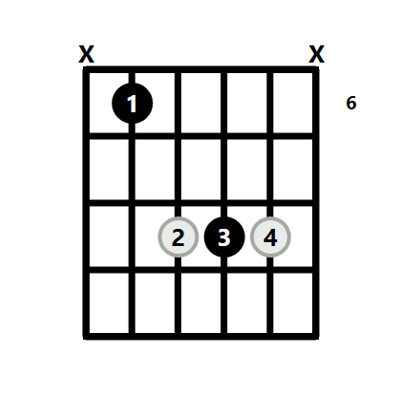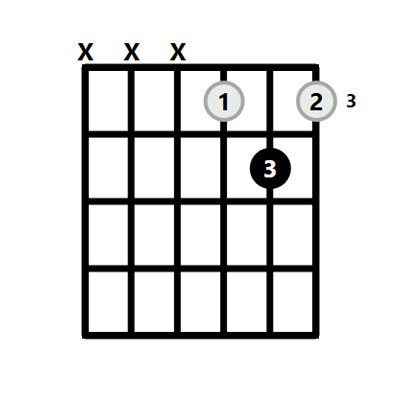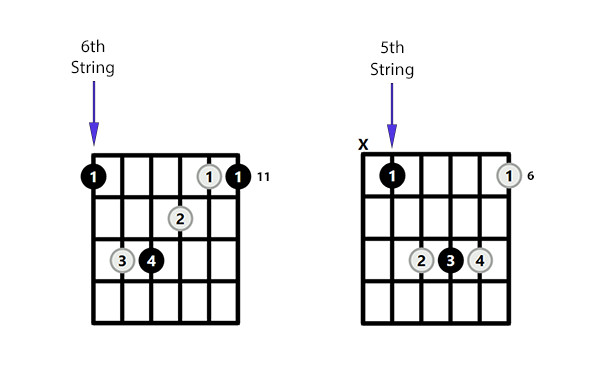The E flat major guitar chord (often written as Eb major or Eb) is a foundational chord for guitarists across genres. From smooth jazz progressions to powerful rock riffs, the Eb chord’s rich sound adds depth and emotion to countless songs. This comprehensive guide will take you beyond basic fingerings, exploring various shapes, essential theory, and practical ways to use the Eb major chord in your music.
Understanding the E Flat Major Chord
Before diving into shapes, let’s grasp the fundamentals of the Eb major chord. Knowing the theory behind it will deepen your understanding and make learning easier.
E Flat Major Chord Theory
The Eb major chord, like all major chords, is built upon a specific formula of musical intervals. It’s composed of three notes:
- Eb (Root): The foundational note and the chord’s namesake.
- G (Major Third): This note provides the major quality, giving the chord its bright and uplifting character.
- Bb (Perfect Fifth): Adding stability and fullness to the chord.
These notes are derived from the E Flat Major scale: Eb, F, G, Ab, Bb, C, D. The Eb major chord uses the 1st, 3rd, and 5th degrees of this scale.
Musically, the intervals within the Eb major chord are:
- Major Third: Between the root (Eb) and the third (G).
- Minor Third: Between the third (G) and the fifth (Bb).
- Perfect Fourth: Between the fifth (Bb) and the octave of the root (Eb).
In the key of Eb Major, the Eb major chord is the tonic or I chord, establishing the key’s home base. The complete chord sequence in the key of Eb major is: Eb, Fm, Gm, Ab, Bb, Cm, and D diminished.
Exploring Different E Flat Major Chord Shapes
One of the beauties of guitar is the variety of ways to play the same chord. Here are several essential Eb major chord shapes, ranging from beginner-friendly to more advanced voicings.
Standard Eb Major Chord Shape
This is often the first Eb chord shape guitarists learn. It’s a root-5 barre chord shape played at the 6th fret. While often described as a barre chord, the index finger may only press down the root note in practice.
 Standard Eb Major Chord Shape on Guitar
Standard Eb Major Chord Shape on Guitar
Easy Eb Major Chord Shape
For beginners or quick changes, the simplified Eb chord shape is ideal. It utilizes only the top three strings and mirrors the shape of an open D chord moved up one fret.
 Easy Version of Eb Major Chord Shape for Guitar Beginners
Easy Version of Eb Major Chord Shape for Guitar Beginners
Barre Chord Shapes for E Flat Major
Barre chords unlock chord voicings across the fretboard. The Eb major chord can be played as both a root 6 and root 5 barre chord shape. The root 5 barre shape starts at the 6th fret, while the root 6 barre shape begins at the 11th fret.
 Eb Major Barre Chord Shapes on Guitar Fretboard
Eb Major Barre Chord Shapes on Guitar Fretboard
E Flat Major Triads
Triads are three-note chords that provide essential harmonic information. Exploring Eb major triads in different inversions expands your understanding and fretboard knowledge. The inversions are:
- Root Position: Eb – G – Bb
- 1st Inversion: G – Bb – Eb
- 2nd Inversion: Bb – Eb – G
Here are several ways to play Eb major triads across the neck:
 Various Eb Major Triad Shapes for Guitarists
Various Eb Major Triad Shapes for Guitarists
Alternative E Flat Major Chord Shapes
Beyond the common shapes, exploring alternative voicings adds color and versatility to your playing. These shapes might be less frequent but offer unique sonic options.
Utilizing the E Flat Major Chord in Music
The Eb major chord isn’t just an isolated entity; it’s a functional part of musical contexts. Understanding where it fits enhances your songwriting and improvisation skills.
Keys Featuring the Eb Major Chord
The Eb major chord naturally appears in several keys, acting as a primary or secondary chord:
- Eb Major: As the tonic chord (I).
- Bb Major: As the subdominant chord (IV).
- Ab Major: As the dominant chord (V).
- C minor: As the relative major’s dominant chord (III).
- G minor: Appearing as the flattened subtonic chord (bVII).
- F minor: As the flattened subtonic chord (bVII).
Chord Substitutions for Eb Major
In certain situations, you can substitute the Eb major chord with related chords to create harmonic interest. Common substitutions include:
- Eb sus4: Adds a suspended, unresolved quality.
- Eb sus2: Creates a lighter, more open sound.
- Eb add9: Adds a jazzy, extended harmony.
Conversely, the Eb major chord can often simplify more complex chords with Eb as the root, like Ebmaj7 or Eb7, although it’s not a substitute for minor chords.
Scales to Play Over the Eb Major Chord
For soloing or melody creation over an Eb major chord, several scales work effectively:
- Eb Major Scale: The most natural choice, providing consonant and diatonic melodies.
- Eb Major Pentatonic Scale: A simpler, bluesier option within the major tonality.
- Eb Lydian Mode: Offers a brighter, more ethereal sound with its raised 4th.
- Eb Mixolydian Mode: Introduces a dominant 7th sound if you want a bluesier or dominant feel.
Conclusion
The E flat major guitar chord is a versatile and essential chord in your guitar vocabulary. By mastering various shapes, understanding its theoretical foundation, and exploring its uses in different musical contexts, you’ll unlock new creative possibilities on the guitar. Practice these shapes, experiment with substitutions, and explore the suggested scales to truly integrate the Eb major chord into your playing.

